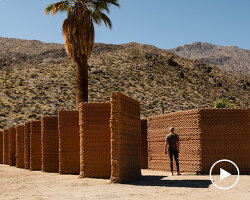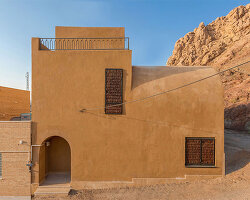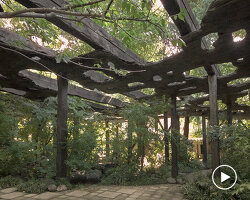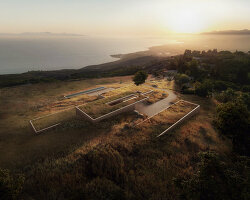learning from the earth
Junya Ishigami and his team celebrate the completion of ‘House & Restaurant‘ in the Japanese city of Yamaguchi. The sculptural work of architecture suggests a naturally eroded landform, recalling the tunnels and rocky vaulting of subterranean caves, and expressing the familiar quality of roughness found in nature.
In many ways these organic characteristics can be seen across the architect’s larger body of work — with the charred timber canopy which tops his Kokage-Gumo Pavilion, and with the undulating earthwork which shapes his Art Biotop Water Garden. In Thailand he introduced a Rainbow Carpet, whose thin brick veil is punctured by a series of large, carved openings. One of the most experimental Japanese architects of his generation, his poetic visions often seemed too radical to be realized, rendering those completed projects all the more fantastic.
Upon completion of the House & Restaurant in Yamaguchi, Junya Ishigami, who received the golden madonnina trophy of Milan’s THE DESIGN PRIZE 2021-22, shares with designboom an in-depth account of the design process.
 all images © Junya.Ishigami+Associates, unless otherwise stated | header © Yashiro Photo Office
all images © Junya.Ishigami+Associates, unless otherwise stated | header © Yashiro Photo Office
raw and organic: junya ishigami’s excavation
This latest project by Junya Ishigami for a French restaurant owner now stands as an harmonious blend of a fine restaurant and a welcoming family home. The raw surfaces of the excavated space reflect the authenticity of the cuisine — this dialogue was a truly intentional, even while the unusual construction process uncovered new discoveries.
The architect elaborates: ‘The project is a residence/restaurant for a French restaurant owner. He is an old friend of mine, and he was the one who commissioned the Tables for a Restaurant. I was asked to design a building as ‘heavy’ as possible. ‘I want an architecture whose heaviness would increase with time,’ he said. ‘It cannot be artificially smooth but rather something with the roughness of nature. Authentic cuisines require such a place.’
‘He also told me that ‘it has to look as if it has been there and will continue to be there for the longest time.’ His idea was to create a brand-new long-established restaurant.’

a welcoming space for dining and living
Junya Ishigami describes the programmatic balance between house and restaurant, according to the wishes of the client: ‘He was longing for something that is both a house and a restaurant, something he could pass on to his children and grandchildren. Now, he invites guests to the restaurant as he would invite friends to his house, and with someone special, he would let them into the living room or even stay overnight.’
‘When the restaurant is closed, the hall serves as a place for the family to spend time or for the children to study. The plan is arranged with the restaurant on the north and the residence on the south. To go back and forth between the spaces, they can walk through any one of the three courtyards that separate them.’
 3D data was generated from a mass model, then the mold was dug manually
3D data was generated from a mass model, then the mold was dug manually
unearthing the inverted landscape
Although the final result of Junya Ishigami’s House & Restaurant appears as a naturally-occurring cave, the process of sculpting and building the space was methodical — with many moments of exploration. The result is an inverted landscape, carved in part by nature.
Describing the construction of the project, the architect writes: ‘In terms of construction, we conceived a process of constantly sharing, accepting, and referencing the un-precisions and accidents that occurred on the site to create an architecture that internalizes natural distortions and uncertainties.
‘More specifically, we dug a hole in the ground to pour concrete, excavated the volume, and fixed glasses to create interior space.’

the team dug a hole in the ground to pour concrete, excavated the volume, and fixed glass to create interior space
The precise design
‘First, a mass model that went through countless modifications was converted into 3D data. The 3D coordinate data was then input into a total station (TS) survey instrument to determine the points utilizing a navigation system for pile driving. At the same time, construction workers dug the hole manually for precision while constantly confirming the position and shape on an iPad. Unexpected factors such as growing grass, soil collapsing, or errors due to manual labor were tolerated as much as possible.’
‘When the structure was excavated after concrete solidification, it was caked with mud. With the range in geology, the nature and appearance of the soil differed from place to place. We originally planned to wash away the dirt to reveal a gray concrete structure. However, we were impressed by how it looked with soil that we decided to leave it as it is. It was then that we sensed the atmosphere of a cave and decided to redesign the building with a new image.’

guests are invited to the restaurant as friends into a home
translating form into architecture
‘In designing the interior space, we visualized in 3D images the differences between the design drawings and the actual surface coordinates of the excavated structure. This process revealed new spaces that we had not anticipated to emerge from the overlapping discrepancies. We discovered such places and updated the way to inhabit the architecture accordingly. Thus the architectural design process was flipped, to reference the structure to determine the designs including the placement and number of glass pieces, arrangement and size of the furniture, and positions and details of MEP facilities.’
‘For example, where to fix the glass was adjusted based on actual on-site measurements, and 3D scan data was used to verify that the glass would not break by hitting the structure during the construction nor by opening/closing, and to adjust the position of the hinges. To simplify the plumbing route, the water supply and drainage were planned to pass through the three courtyards in a straight line, and faucets, drainage pipes, ventilation ducts, etc. were installed to penetrate the glass windows into the rooms. Accepting uncertainties, the concrete mass will gradually be transformed into architecture through cut-and-try. The owner will start a life here, run a restaurant, and continue to renew this place.’
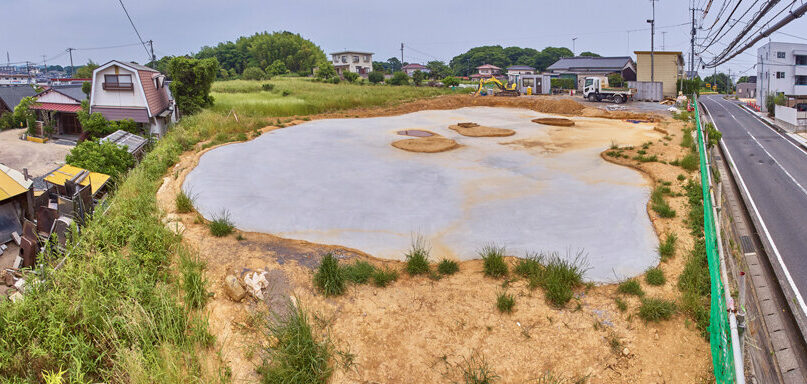
construction process | image courtesy of maison owl

construction process | image courtesy of maison owl

construction process | image courtesy of maison owl

construction process

construction process | image courtesy of Maison Owl

dirt caked on the cast concrete form was left in place to enhance the cavernous atmosphere

image © Yashiro Photo Office

image © Yashiro Photo Office

the process revealed new, unanticipated interior spaces
 in this house, the owner will start a new life, run a restaurant, and continue to renew the place
in this house, the owner will start a new life, run a restaurant, and continue to renew the place
image © Yashiro Photo Office

the owner looks forward to passing this place on to his children and grandchildren

the home’s bathroom space

the home’s sink
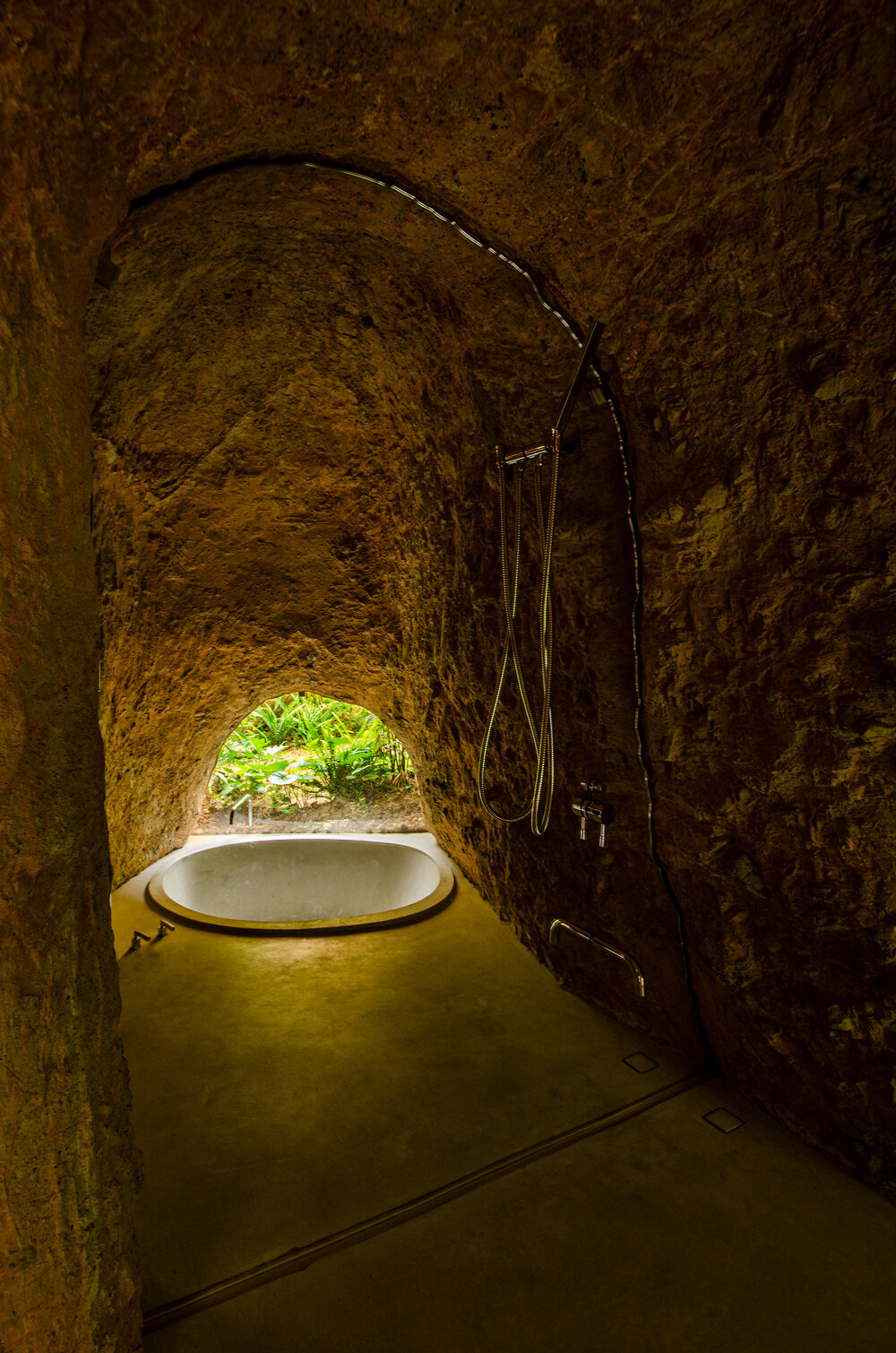
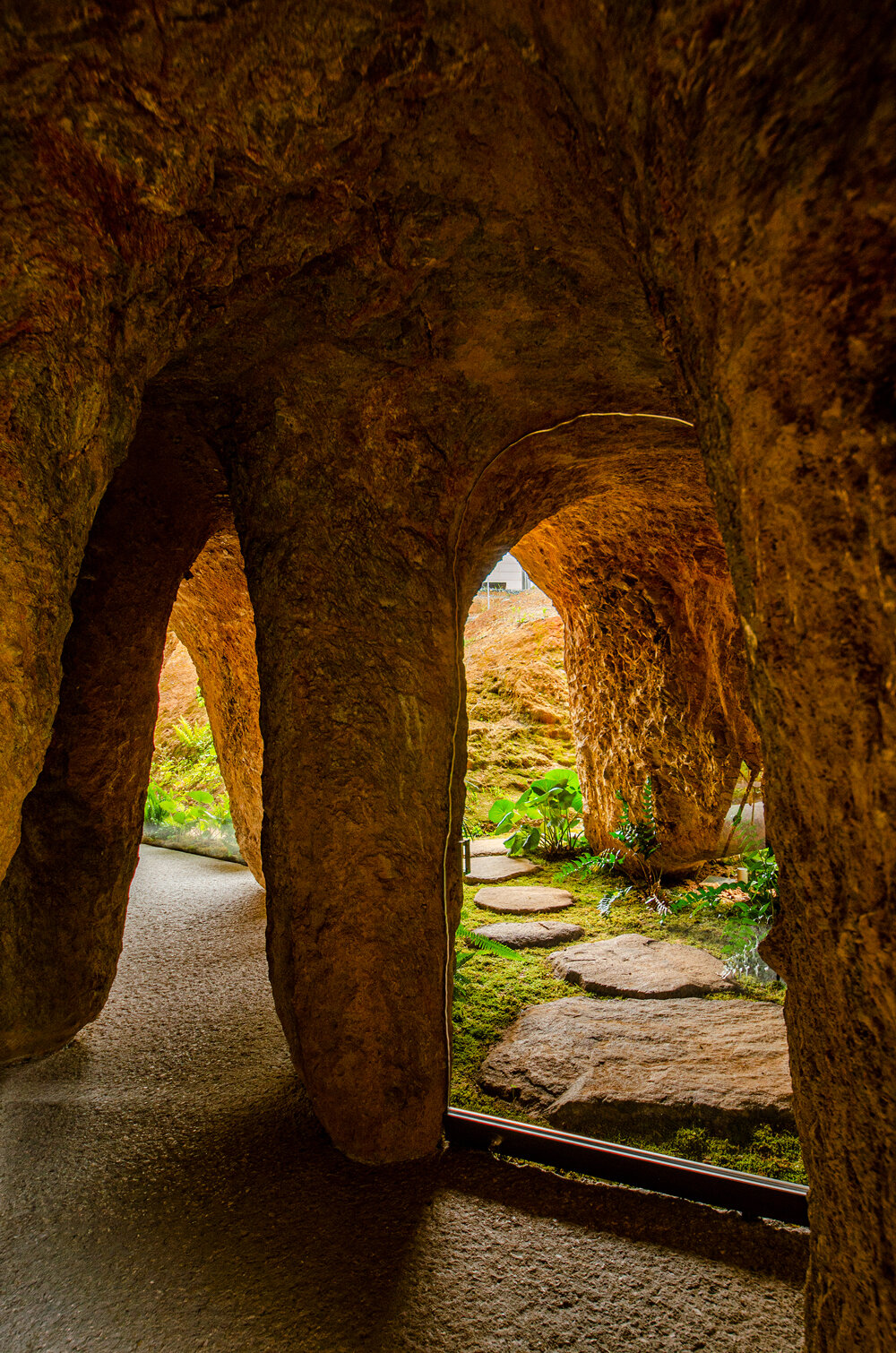























project info:
project title: House & Restaurant
architecture: Junya Ishigami + Associates | @junya.ishigami_associates
location: Ube, Yamaguchi, Japan
client: Motonori Hirata
design phase: 2013 — 2016
construction phase: 2016 — 2022
photography: © Junya.Ishigami+Associates, © Yashiro Photo Office
lead architects: Junya Ishigami, Taeko Abe, Jaehyub Ko, Takuya Nakayama
structural engineering: Jun Sato Structural Engineers (Jun Sato, Yoshihiro Fukushima)
lighting/interior designer: Junya.Ishigami+Associates
(Junya Ishigami, Takuya Nakayama)
lighting advisor: Izumi Okayasu Lighting Design (Izumi Okayasu)
curtain: Yoko Ando Design
general contractor: Akita Kensetsu Co.,Ltd. (Masato Akita, Gaku Matsumoto, Takaki Fukuda, Takuya Nakayama, Akane Enda, Yuki Inoue)
MEP: Echo Mechanical Plumber (Koichi Tashiro)
landscape: SOLSO (Yuta Itagaki), Takayama Zoen (Kazuya Kiryu)
glass: Meiji Glass Company Limited (Kensuke Kashihara)
fixtures: Yanagiya (Yoshio Yanagiya)
furniture: Gotanda Seisakusho Co., Ltd. (Shigeki Miyamoto, Ai Mizuta)
RC furniture: I.D.Works (Hayato Takehashi)
translation: Fraze Craze
first appearance: ‘GA Houses 182, A.D.A. EDITA Tokyo’
previous coverage on designboom: June 2019
THE DESIGN PRIZE is an annual award program that celebrates excellence on a global scale. Initiated in 2017 and curated by designboom, with patronage by the city of Milan, THE DESIGN PRIZE recognizes both the extraordinary achievements and little sparks of beauty and delight that have emerged over the past 12 months.











